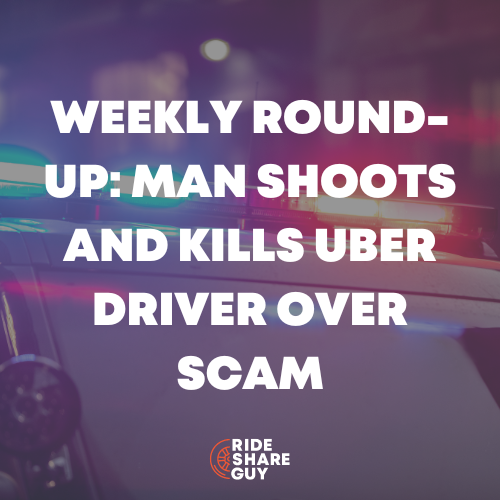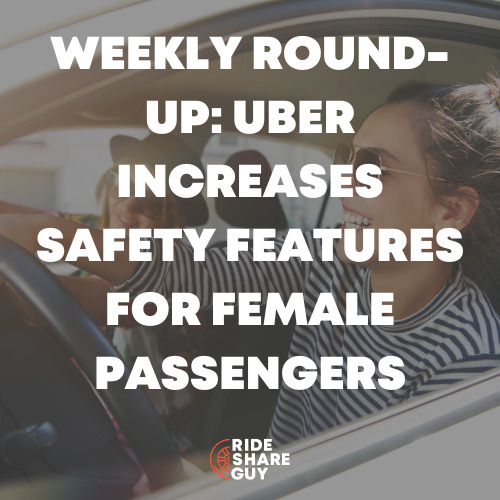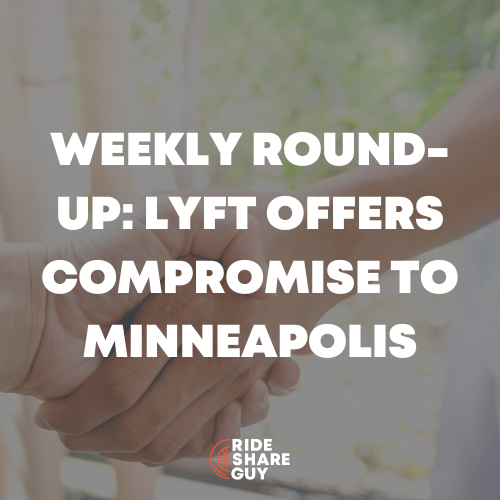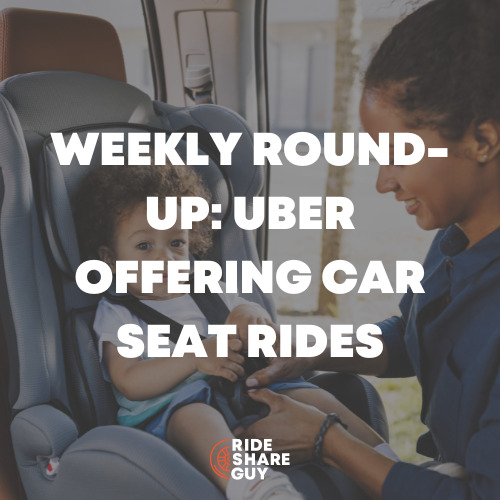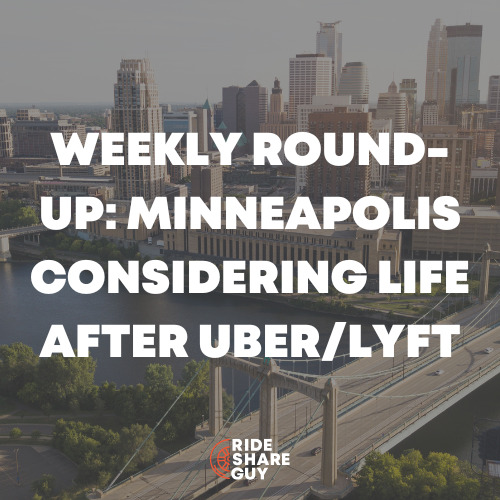A lot of interesting articles out this week about the future of shared mobility services (like Bird, see article below) and the future of rideshare. Uber continues to lose cash almost faster than it can bring in, and there may be only one palatable answer for how Uber can turn it around, make a profit – and keep drivers happy. In this roundup, RSG contributor John Ince covers scooters, Uber’s losses, and how Uber is trying to make drivers happier.
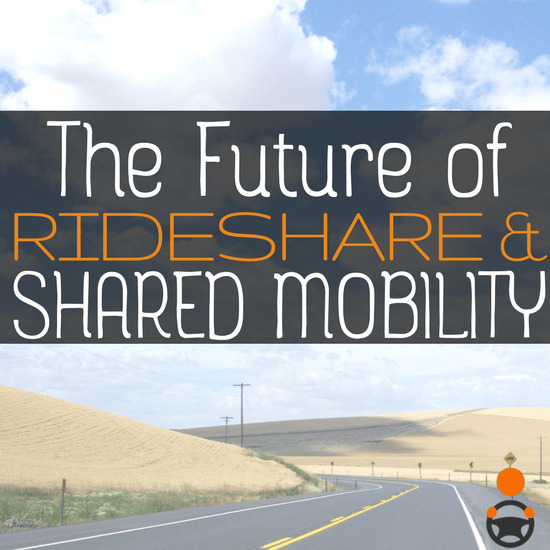
The Bird electric scooter conundrum: So fun, so exhilarating, so dangerous [LA Times]
Sum and Substance: Each morning, as if by magic, hundreds of them materialize between 5 and 6.
I have seen Birds perched on sidewalks, in alleys, in front of restaurants, on the Venice canals, at the Santa Monica Pier. They have been spotted as far away as LAX and West Hollywood. Each evening after dark, they are scooped up, taken away to be recharged.
Depending on your point of view, the Bird fleet is an environmentally sound, inexpensive way to go “the last mile” between public transit and your destination, an annoying impediment to pedestrians who have to dodge them on sidewalks, a safety nightmare, a tantalizing toy for teenagers too young to legally rent them, a crime against the people of the state of California as laid out in a criminal complaint by Santa Monica against Bird Rides Inc. …or just a hell of a lot of fun…
“I’d never ridden a scooter before this,” said Isaac Galan, 20, a Santa Monica College student and avid skateboarder who works at the Cow’s End coffee shop near the Venice Pier. “I’ll go maybe a mile at a time, maybe once a week, if I don’t feel like skating or walking.”
Even though Birds are meant to be ridden in bike lanes on city streets, Galan said, he does not feel safe on one anywhere but the beach bike path. “I’ve seen a lot of people going 15 mph, and then hit something because they didn’t realize how close they were. It’s not a problem with the Bird scooter. It’s more a problem with people’s depth perception and misunderstanding their speed.”…
Santa Monica, which has embraced bike hubs and reducing dependence on single-occupancy cars, has welcomed Bird to town. Sort of. “It’s fun to be on a scooter and we completely understand the appeal,” said Santa Monica public information officer Constance Farrell. “But we also understand they are dangerous, and not toys, and need to be operated safely.” …
Late last year, Santa Monica city officials grew so frustrated with Bird’s refusal to work out some licensing issues that the city attorney filed an eight-count misdemeanor criminal complaint naming the company and VanderZanden as defendants. The complaint alleges that Bird violated requirements for business licenses and vendor permits and failed to pay administrative fines. Bird says vendor permits apply to food trucks, not scooters…
Santa Monica is eager to disrupt dependence on cars, Farrell said, but right now Bird is in the doghouse. “This is a rogue implementation model that does not have an eye toward safety.” The city, somewhat mollified by Bird’s free helmet program, is especially concerned about scooters being left on sidewalks, obstructing pedestrians and wheelchairs. VanderZanden disputes her description: “It’s not rogue. We are working closely with the city and feel we have had some productive conversations.”…
My Take: Well, this is about as California as you can get. Innovative, techy, trendy and a bit in your face – much like Uber (or Lyft). As an avid mountain biker, I’m totally into two wheels – non-polluting, minimizing traffic congestion, wind in your face and good exercise – but too much of a good thing can become a problem.
Santa Monica, which is embracing “bike hubs and reducing dependence on single-occupancy cars” has a little headache with Bird. The city does have reasonable concerns, especially about those Bird users who ignore traffic signs and carelessly leave the scooters in the way of pedestrians and those in wheelchairs. Those users are a challenge for Bird (and its image) as well.
What’s fascinating about this experience is how technology enables the mass adoption of something that few people would have tried without the app. On balance, I’d say Bird is a form of progress – just like Uber and Lyft were forms of progress. How far that progress will take us will depend on the implementation of the societal infrastructure that makes mass adoption (or limitations on use) possible.
Related: Want to see the Bird scooters in action? Our review here.
This app lets drivers juggle competing Uber and Lyft rides [WIRED]
Sum and Substance: Nearly 70 percent of on-demand drivers work for both Uber and Lyft, and one-quarter drive for more than just those two, according to a survey by The Rideshare Guy, a popular website for rideshare drivers. But each app wants to keep drivers exclusively on its platform.
The apps’ designs make it easier for drivers to accept every ride they’re handed, rather than consider options: When a ride request comes in, drivers have about 15 seconds to assess the type of ride (Lyft Line, Uber X, etc.), the passenger rating, the time it will take to pick up the passenger, the length of the trip, and whether or not surge pricing applies.
That’s a lot of information to absorb in a short amount of time, let alone compare with a competing offer. In other words, as much as Uber and Lyft promise their drivers independence, they make it difficult—and at times unsafe—for drivers to exercise it.
Those constraints inspired former Uber and Lyft driver Herb Coakley to start Mystro, an app that circumvents on-demand platforms’ notorious psychological tricks to give drivers more control over their work.
Mystro aggregates jobs from Uber, Lyft, and (as of December) Postmates, and presents them to drivers on one screen; it also lets its 40,000 users set filters to automatically accept or reject rides based on distance, surge pricing, passenger ratings, and more. As of a month ago, Mystro lets drivers do all that without taking their hands off the wheel.
My Take: An excellent article on Mystro, an app that we review here and have a video on here, about how Mystro keeps drivers safer out on the road. This article also covers the behind-the-scenes of Mystro, how it got started – and how Mystro is jolting Uber and Lyft with their innovative app.
Sign up to download Mystro here!
Uber’s loss jumped 61 percent to $4.5 billion in 2017 [CNBC.com]
Sum and Substance: Uber has just revealed its fourth-quarter financial results, which show that the ride-hailing company’s loss jumped 61 percent in 2017. The company lost $4.5 billion last year, up from $2.8 billion in 2016, according to figures first reported by The Information and confirmed by CNBC on Tuesday.
My Take: Dara Khosrowshahi, Uber’s CEO, is trying to put a positive spin on the fact that the company “only” lost $1.1 billion in Q4, down from $1.46 in Q3. If that burn rate continues, they will have used up their $6 billion cash hoard by the time they want to go public in 2019. That’s not a good state of affairs for a company that wants to inspire confidence in its potential investors.
Drivers don’t trust Uber. This is how it’s trying to win them back [Recode]
Sum and Substance: … “You know what,” Kalanick said to Kamel before he abruptly exited the car. “Some people don’t like to take responsibility for their own shit. They blame everything in their life on somebody else.” The now infamous encounter, which was caught on video, validated the primary concern of Uber’s three million drivers: Kalanick — and, by extension, Uber — wasn’t listening to them.
“Driver partners.” That was, and still often is, what the combative CEO and Uber called the contractors operating on the $69 billion ride-hail company’s platform across the world. To many of those drivers, however, after years of undercutting fares, raising commissions and refusing to listen to their demands, Uber was seen as less a partner and more a shadowy, money-hungry entity that fettered them to the company because of its hold on the market. …
Maintaining its supply of existing drivers was an even more important factor in hitting profitability for a company that still loses $1.46 billion a quarter. That was compounded by the series of scandals Uber faced in 2017 — from executive turnover to allegations of stolen trade secrets, all of which ultimately led to a drop in marketshare. …
The company is in the midst up of an upheaval under the tutelage of its new CEO Dara Khosrowshahi. With an eye on taking the company public in 2019, Khosrowshahi is attempting to atone for the sins of Uber’s past….
In doing so, the company marked the beginning of a 180-day driver improvement campaign — … The campaign was not without its missteps, and some drivers are still left wanting, but this was the first clear move by Uber to change not only the narrative but the actual workings of its driver operations….
In the first few months of the improvement campaign, the company attempted to answer drivers’ most frequent complaints: Tipping, pay transparency and customer support. The company also attempted to enhance its biggest value proposition for drivers: Flexibility.
And here’s what drivers got. As of December 2017, drivers received $200 million in tips. Compare that to Lyft, which has offered a tipping option since it was founded about six years ago and only just paid out $250 million in tips as of June 2017.
Drivers would be paid extra for long trips, they’d get an additional flat fee for every new pickup on an UberPool ride, be paid for every minute they waited for a passenger over two minutes and they’d have 24/7 phone support. Other features were more about the process of driving and the kind of information drivers were getting. …
… According to the company, the volume of complaints or questions drivers have about pay and other features have decreased over the course of the campaign. However, the company would not disclose the difference between ticket volume before and after the campaign.
My Take: Johana Bhuiyan of Recode offers up a thorough and balanced assessment of the ongoing power struggle between drivers and Uber. The article captures many of the nuances of this battle, both on the public relations and the actual level.
Much of the information in this article will be familiar to regular readers of this blog, but here it’s all laid out for us to consider yet anew. In my humble view, all this posturing boils down to a simple formula – if fares remain the same, it’s a zero-sum game between driver and company. The more Uber makes, the less drivers make – and vice versa.
As pressure mounts on the company to show profits in a run up to its 2019 IPO, Uber will have a choice to make: raise fares or take more of drivers’ pay through fees or higher commissions. The only way to break out of this zero-sum game is to raise fares.
Once that threshold is crossed, both drivers and company win. Passengers will pay more – but they should, because the service they’re getting is worth more than they’re paying now.
Related: Could Uber Ever Be Profitable? Prof. Len Sherman Lays Out the Steps Here
Readers, what do you think of this week’s round up? Do you think it’s inevitable Uber will raise rates on passengers, or no?
-John @ RSG
